Passengers 309 Fatalities 0 Date 13 April 2010 | Crew 13 Injuries (non-fatal) 57 Number of deaths 0 | |
 | ||
Summary Engine failure due to fuel contamination Destination Hong Kong International Airport Location Hong Kong International Airport Similar Merpati Nusantara Airlines Fl, Cathay Pacific Flight 700, Taban Air Flight 6437, Pamir Airways Flight 112, Aviastar‑TU Flight 1906 | ||
Cathay pacific flight 780 top 6 facts
Cathay Pacific Flight 780 was a flight from Surabaya Juanda International Airport in Indonesia to Hong Kong International Airport on 13 April 2010. There were 309 passengers and a crew of 13 on board. As Flight 780 neared Hong Kong the crew were unable to change the thrust output of the engines. The aircraft, an Airbus A330-300, landed at almost twice the speed of a normal landing, suffering minor damage. The 57 passengers who sustained injuries were hurt in the ensuing slide evacuation; one of them received serious injuries.
Contents
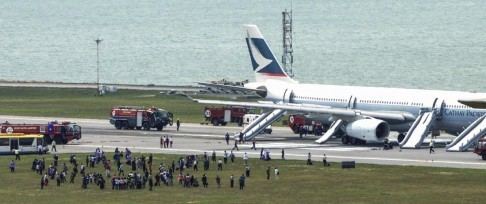
The cause of the incident was contaminated fuel uploaded at Surabaya, which gradually damaged both engines of the aircraft.
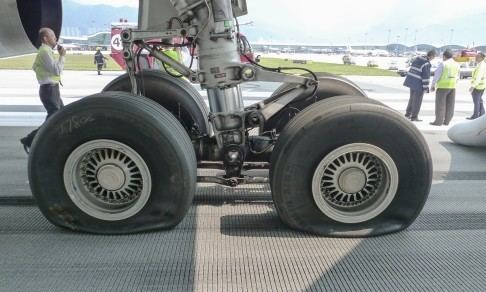
The flight's two Australian pilots, Captain Malcolm Waters and First Officer David Hayhoe, who safely landed the aircraft despite the extraordinary challenge, have been compared with Chesley Sullenberger of US Airways Flight 1549. In March 2014, the two pilots were awarded the Polaris Award by the International Federation of Air Line Pilots' Associations, for their heroism and airmanship.
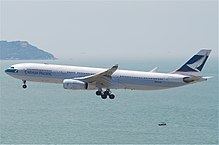
Aircraft

The aircraft involved in the accident was an Airbus A330-300, registration B-HLL (cn 244), fitted with Rolls-Royce Trent 700 engines. It first flew on 4 November 1998, and was delivered new to Cathay Pacific on 25 November 1998.
Accident

Cathay Pacific Flight 780 took off from runway 28 at Surabaya's Juanda International Airport at 08:24 local time (01:24 UTC). During the climb, both engines had small engine pressure ratio (EPR, a measure of the amount of thrust output) fluctuations, with No. 2 engine fluctuating over a greater range than No. 1 engine. Just over half-an-hour after takeoff, when the aircraft was at its cruising altitude of Flight level (FL) 390, the Electronic Centralised Aircraft monitoring (ECAM) displayed an "ENG 2 CTL SYS FAULT" message. The crew contacted the airline engineering department's Maintenance Control (MC) and discussed the fluctuations. As other engine operating parameters on both engines were normal the flight crew and MC decided it was safe for the flight to continue.
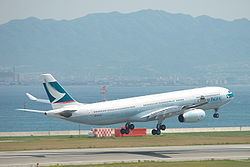
Almost two hours after departure, at 03:16 UTC, the "ENG 2 CTL SYS FAULT" ECAM message reappeared. The flight contacted MC to review the issue again. As all other engine parameters remained normal, both the flight crew and the MC were again satisfied that it was safe to continue flying to Hong Kong.
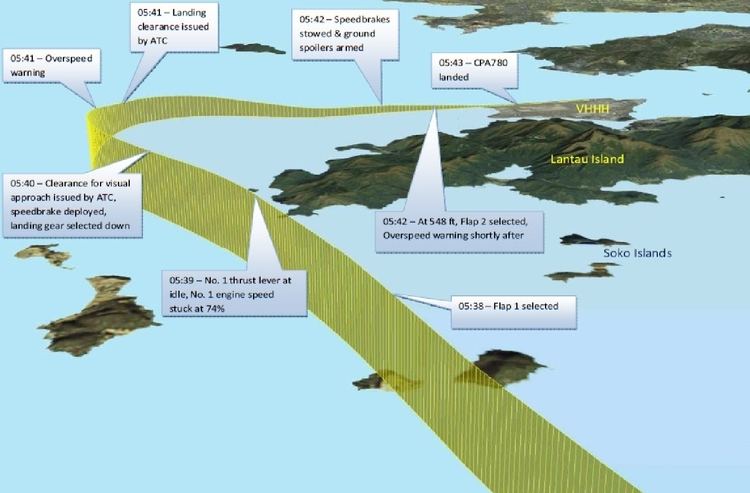
After another two hours elapsed the aircraft was on descent to Hong Kong when, at 05:19 UTC, at a position about 203 kilometres southeast of Hong Kong's Chek Lap Kok Airport, the aircraft's ECAM displayed "ENG 1 CTL SYS FAULT" and "ENG 2 STALL" within a short period of time. The second message signified an engine compressor stall, a potentially-serious engine problem. The flight crew accordingly carried out the necessary ECAM actions with No. 2 engine's thrust lever moved to the idle (or minimum-thrust) position. The crew increased No. 1 engine's thrust to Maximum Continuous Thrust (MCT) to compensate for the low thrust of No. 2 engine. Following these actions the crew declared a "Pan-pan" with Hong Kong Air Traffic Control (ATC), requesting the shortest possible route to the airport and priority landing.

A few minutes later the aircraft was approximately 83 km southeast of Chek Lap Kok approaching an altitude of 2,438 metres when an "ENG 1 STALL" ECAM message was annunciated. The flight crew carried out the actions for a No. 1 engine compressor stall and declared a "Mayday" with ATC. The captain then moved the thrust levers to test the engines' response. During these movements, No. 1 engine's rotational speed increased to about 74% N1 while No. 2 engine remained at about 17% N1. Following the increase of No. 1 engine to 74% N1, movement of the thrust levers had no effect on engine speed.
At 13:43 hours local time (05:43 UTC) and 11 minutes after declaring the "Mayday", the crew landed the aircraft on Chek Lap Kok's Runway 07L at a groundspeed of 426 kilometres per hour. This speed was 176 km/h more than an A330s normal speed at touch-down, was above the maximum allowable flap-extension speed of the A330-300 and was also higher than the speed rating of the tires. After touch-down only No. 1 engine's thrust reverser deployed and the crew brought the aircraft to a stop using maximum braking. No. 1 engine remained at between 70% and 80% N1 throughout until the crew shut down both engines after stopping the aircraft. Five of the aircraft's eight main wheel tires deflated and airport fire fighters reported that smoke and flames were coming from the landing gear. Because of this the captain ordered an emergency evacuation, during which 57 passengers were injured; of these ten were taken to hospital.
Investigations
Investigators from the Hong Kong Civil Aviation Department, the Bureau d'Enquêtes et d'Analyses pour la Sécurité de l'Aviation Civile (BEA) of France and the Air Accidents Investigation Branch (AAIB) of the United Kingdom formed a team to investigate the accident. The National Transportation Safety Committee (NTSC) of Indonesia and the National Transportation Safety Board (NTSB) of the United States of America were also involved in the investigation, as were representatives of Airbus, Rolls-Royce and Cathay Pacific.
Data from the Digital Flight Data Recorder (DFDR), Cockpit Voice Recorder (CVR) and Quick Access Recorder (QAR) were downloaded for analysis. The investigation concentrated on the engines, the engine control systems and the fuel system.
Analysis of the engines found that their fuel systems were contaminated with spherical particles. The particles had caused the Fuel Metering Units' Main Metering Valves (MMVs) to seize; the MMVs were found to be stuck in positions corresponding to the recorded thrust output of each engine as it approached Hong Kong. Other engine components were found to be contaminated with the particles as well, and No. 2 engine's Variable Stator Vane Controller was also found to be seized; the entire fuel system including the aircraft's fuel tanks was found to be contaminated with the spherical particles. As part of the investigation, fuel samples had been collected at Juanda International Airport. Investigators found that the contaminant particles were present in the fuel samples. The fuel supply pipeline system used to refuel aircraft at Juanda International Airport had been extended prior to B-HLL being refuelled there, as part of the construction of new aircraft parking bays. The investigation has discovered that not all procedures were followed when the fuel pipeline system was brought back into service.
